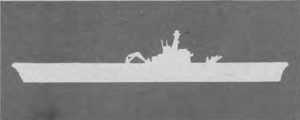In 1970 Lew Lind, Rod Atwill, Alan Payne and myself found ourselves with the responsibility of putting together an association which we were to call the Naval Historical Society. There were ...
HMAS Sydney III
Oilers in the Royal Australian Navy
IN THE BEGINNING there was COAL!! Lots of it. Dirty, dusty, nostril filling and seemingly unlimited in supply. Coaling Ship was an evolution in which everybody was engaged in the ...
I’m Jesus, the Canteen Manager (Part 6-Conclusion )
I’m Jesus, the Canteen Manager (Part 5)
I’m Jesus, the Canteen Manager (Part 4)
I’m Jesus, the Canteen Manager (Part 1)
Alan Payne – Naval Constructor Supreme
Australian Naval History on 5 October 1975
HMAS SYDNEY, (aircraft carrier and fast troop transport), was sold for breaking up in South Korea. ...
Farewell to Old Sydney Forever
ALTHOUGH HER DAYS WERE NUMBERED, the shock announcement on July 20th ‘The transport HMAS Sydney is to be paid off. She will be withdrawn from the Australian Fleet and will ...
Australian Naval History on 12 November 1973
HMAS Sydney decommissioned, by which time she had steamed 395,591 miles as a fast troop transport. Since first commissioning in 1948 she had steamed 711,549 miles. Stripped of all useful ...
